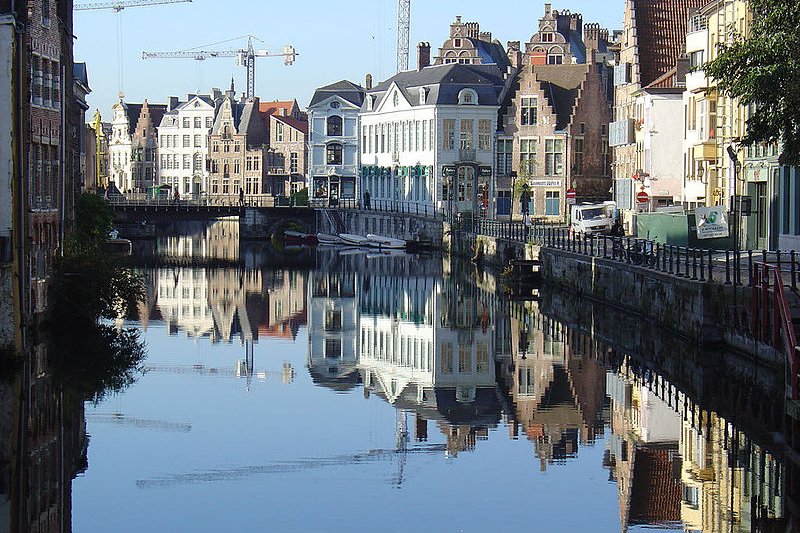 View of houses along the Gand Canale in Gent, Belgium
View of houses along the Gand Canale in Gent, BelgiumSource: https://commons.wikimedia.org/wiki/File:Gand-canale.jpg
Author: Mathias Ripp

Ghent (Dutch: Gent; French: Gand) is the third largest city in Belgium. It covers 156.18 sq km and has a population of 233,000 (2011 estimate). The city is located at the confluence of the Scheldt and Lys rivers, in the province of East Flanders in northwestern Belgium. As with the rest of Belgium, it is in the Central European Time, which is an hour ahead of Coordinated Universal Time (UTC+1) and two hours ahead during Daylight Saving Time in summer. The phone area code for Ghent is 09.
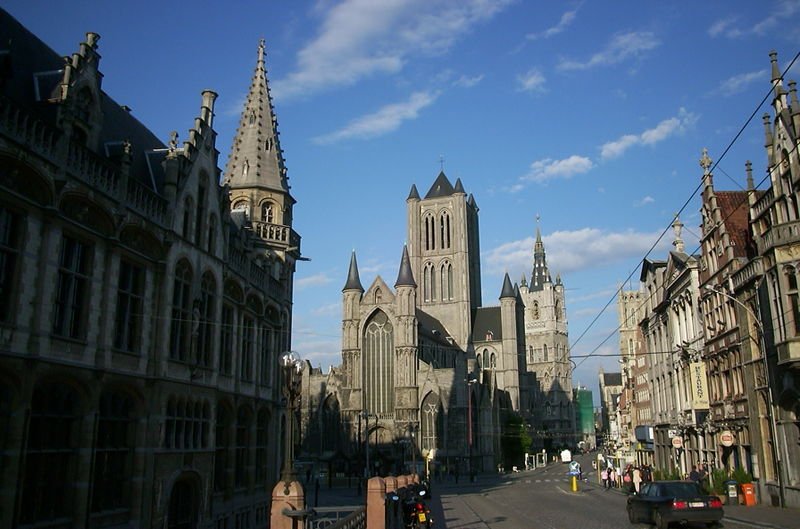 View of Sint-Niklaaskerk, as seen from Sint-Michielsbrug
View of Sint-Niklaaskerk, as seen from Sint-MichielsbrugSource: https://commons.wikimedia.org/wiki/File:Ghent_Sint-Niklaaskerk.JPG
Author: Donar Reiskoffer

The municipality of Ghent comprises the city of Ghent and its surrounding towns including Afsnee, Desteldonk, Drongen, Gentbrugge, Ledeberg, Mariakerke, Mendonk, Oostakker, Sint-Amandsberg, Sint-Denijs-Westerm, Sint-Kruis-Winkel, Wondelgem and Zwijnaarde. The metropolitan area of Ghent has a population of 600,000, making it the fourth most populous in Belgium. The historical part of Ghent boasts the largest pedestrian zone in the country.
The name Ghent means "confluence" in the Celtic language. This is in reference to its location at the meeting point of the Scheldt river and its main tributary, the Lys. The area has been inhabited since the Stone Age and Iron Age. The area was occupied by the Romans and then by the Franks, though documentation on this period of history is scarce.
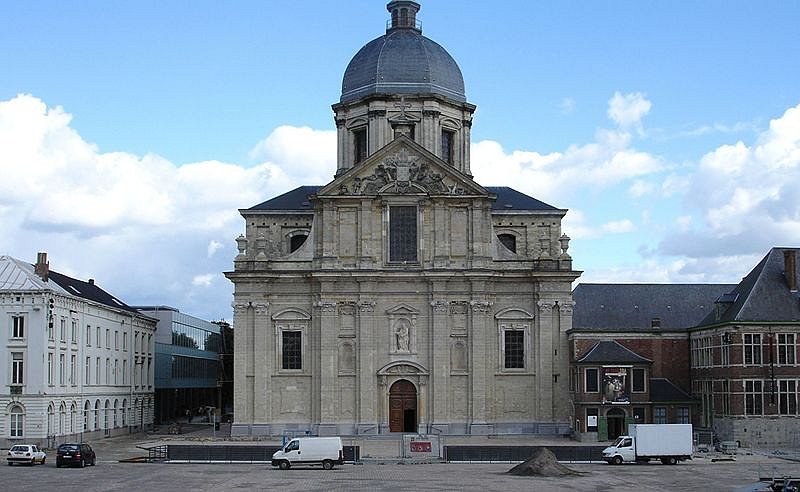 Sint-Pieterskerk, Ghent
Sint-Pieterskerk, GhentSource: https://commons.wikimedia.org/wiki/File:Sint_Pieterskerk.jpg
Author: Carolus

The city of Ghent grew around two abbeys, the Saint Peter Abbey and the St. Bavo's Abbey, both founded by Saint Amand aorund AD 650. The city was plundered by Viking invaders in 851 and 879. It rebuilt itself and grew rapidly, that by the 12th century, it was the second biggest city in Europe after Paris - bigger even than London and Moscow.
The wool industry ushered in the industrialization of Ghent in the Middle Ages. However the Hundred Years War (1337-1453) dealt an economic blow to Ghent. It recovered after the war, but by then the political and social center of Belgium has shifted from Flanders (where Ghent and Brugges are located) to Brabant (the area around Antwerp and Brussels).
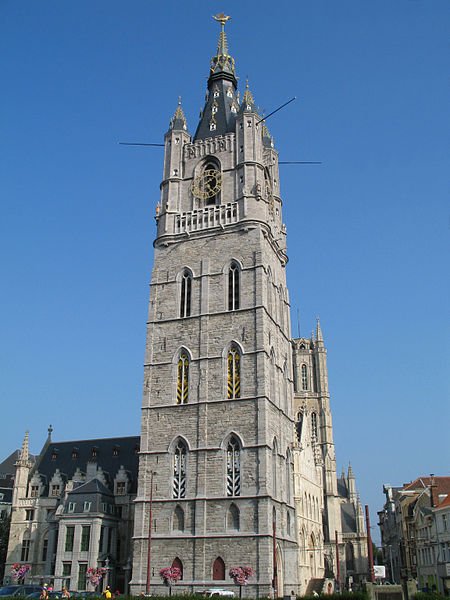 The belfry of Ghent
The belfry of GhentSource: https://commons.wikimedia.org/wiki/File:Gent_Belfort_R03.jpg
Author: Marc Ryckaert

Although born in Ghent, Charles V, who became the Holy Roman Empire and King of Spain, dealt mercilessly with the city after the 1539 Revolt of Ghent, demolishing the Saint Bavo Abbey and replacing it with a fortress manned by Spanish troops.
Today the city of Ghent has preserved its old town, which is rich in medieval architecture. There are numerous churches and béguinages (buildings used by religious women who sought to serve God without becoming nuns).
Visiting Ghent
You can reach Ghent by taking a train from Brussels. The journey takes about half an hour only. You should take the train to the Gent-Sint Pieters Railway Station, the main station of the city. From there, take a tram to the city center.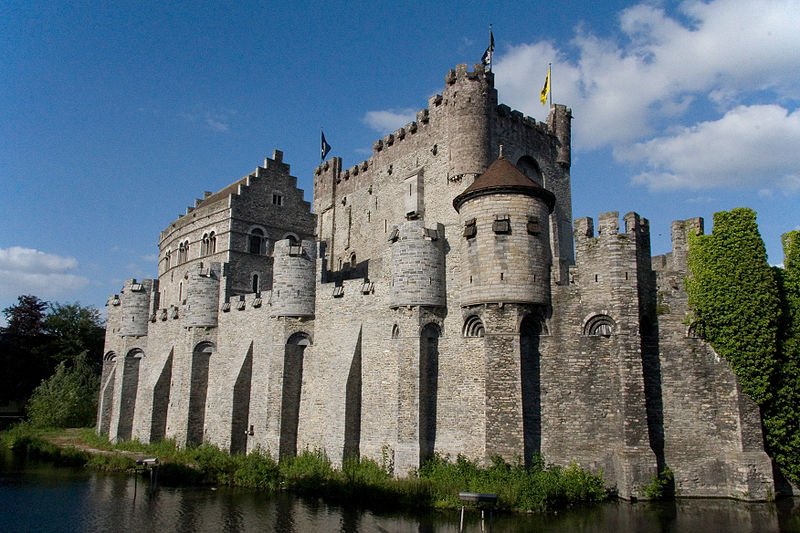 Gravensteen Fortress in Ghent, Belgium
Gravensteen Fortress in Ghent, BelgiumSource: https://commons.wikimedia.org/wiki/File:Gravensteen_%28Gent%29_MM.jpg
Author: Maros

Exploring Ghent
The historic part of Ghent is compact and invites visitors to explore on foot. It is possible to rent a bicycle to cycle around, but not recommended if you are not familiar with cycling, as the old part of town has many slippery cobblestone streets and well as tram tracks.Places of Interest in Ghent, Belgium
- Belfort
- Design Museum Gent
- Dulle Griet
- Graslei and Korenlei
- Groot Vleeshuis
- Het Gravensteen
- Het Huis van Alijn
- Klein Begijnhof
- Museum voor Schone Kunsten
- Sint-Baafskathedraal
- Sint-Niklaaskerk
- Stadhuis
- Stadsmuseum Gent
- Stedelijk Museum voor Actuele Kunst
- Vlaamse Opera
 Latest updates on Penang Travel Tips
Latest updates on Penang Travel Tips

Copyright © 2003-2025 Timothy Tye. All Rights Reserved.

 Go Back
Go Back